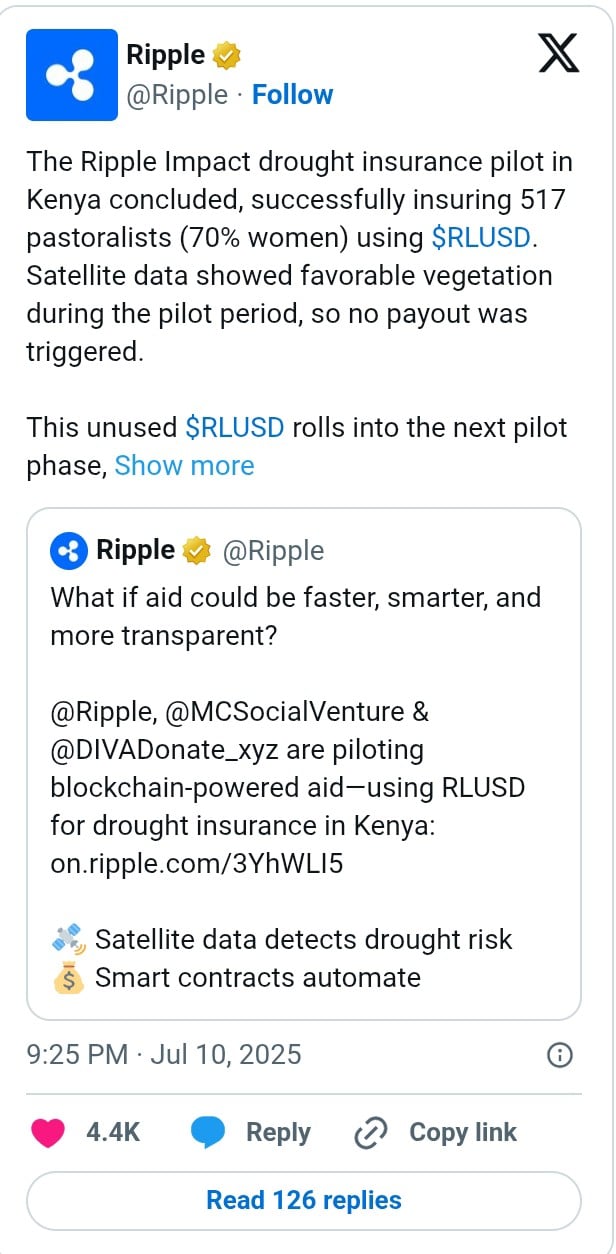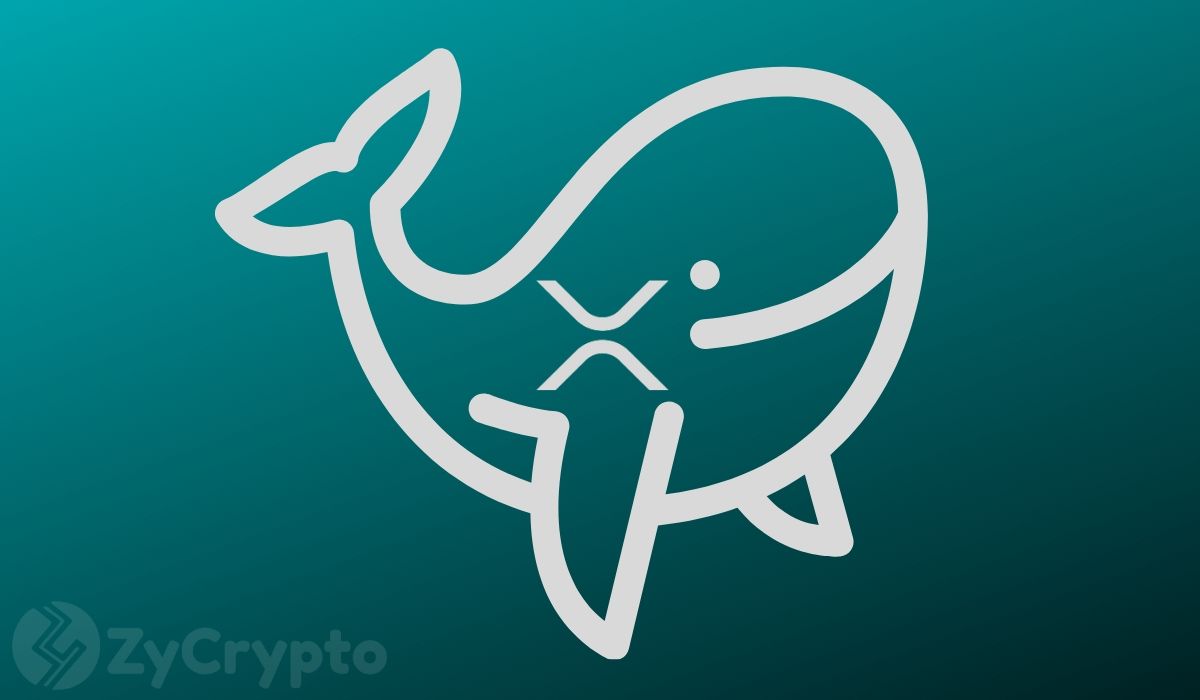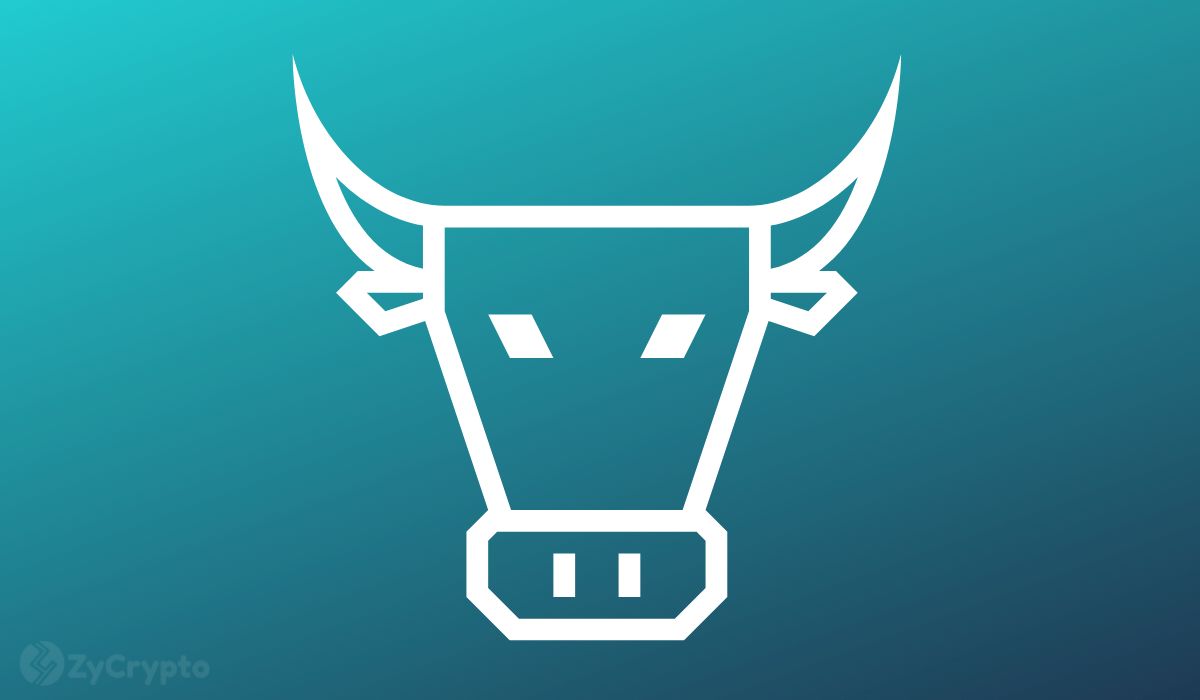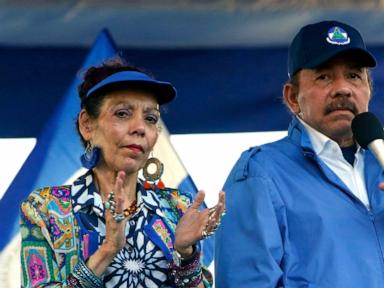ARTICLE AD BOX

- Ripple has announced the end of its drought insurance pilot in Kenya, with 517 new pastoralists onboarded.
- This program would use the Normalized Difference Vegetation Index (NDVI) to assess vegetation health and density, and release $75 RLUSD to each pastoralist against any drought.
CNF disclosed in an earlier report that Ripple, in partnership with Mercy Corps Ventures and DIVA Donate, is piloting blockchain-powered aid using RLUSD for drought insurance in Kenya.
This has been successfully concluded with 517 pastoralists insured. Out of these, 70% were women.

More About the Program
In a previous blog post detailing this exercise, the pastoral community in Kenya, which largely depends on livestock for income, was reported to face issues of drought which decimates herds and leads to a humanitarian crisis.
To offset these challenges, Ripple and its partners announced the start of a pilot project that uses blockchain to deliver financial support through its stablecoin, RLUSD.
For effective delivery, the pilot was designed to use a data-driven approach. In addition to using RLUSD on the Ethereum blockchain, it uses smart contracts to automatically send tokens once drought triggers are detected through a satellite. According to Ripple, the health and vegetation density assessment is done by the Normalized Difference Vegetation Index (NDVI).
Throughout the monitoring stage, the value of the NDVI remained above the 0.61 level threshold, so no payout was triggered.
This validates how blockchain can be a powerful tool for objective, data-driven insurance and aid delivery—ensuring funds reach people when truly needed and guaranteeing automatic insurance payouts via smart contracts when conditions warrant it.
Regardless, the onboard pastoralists would remain insured for the next “high-risk period”. Fascinatingly, the RLUSD, which was unused, would also be rolled over onto the October to December 2025 campaign. Ripple further disclosed that each pastoralist would receive $75 whenever insufficient vegetation for grazing is detected.
Meanwhile, anyone can contribute by simply connecting their digital wallets, such as Metamask, Coinbase, etc, to a page on the Diva Donate website.
This initiative follows years of transparency and long settlement time challenges facing cross-border aid delivery. Using RLUSD, some of these challenges could be offset as it provides near instant settlement times, programmable distribution, and transparency based on predefined conditions, according to the blog post.
Ripple’s (XRP) Achievements with its Impact Program
The Ripple Impact program has provided grants to the likes of Mercy Corps Ventures and CARE to use blockchain to facilitate aid delivery and improve financial inclusion. As explained in our earlier discussion, Ripple has donated more than $200 million since 2018 for a more inclusive and sustainable future.
Ripple’s effort to encourage blockchain’s use in solving global challenges continues as it has also collaborated with Trinity College in Ireland to develop a platform that supports related research. As mentioned in our previous news brief, Ripple plans to support the project with $200,000.
Amid this development, XRP is attempting to break above the $3.0 resistance level as it records 7% surge in just 24 hours to trade at $2.8.
According to our recent analysis, XRP could reach $15 by the end of the cycle. Meanwhile, Sistine Research has projected that the asset could likely touch the $73 level once it successfully trades above $17 and $37, as highlighted in our recent publication.
.png)
 9 hours ago
2
9 hours ago
2








 English (US)
English (US)